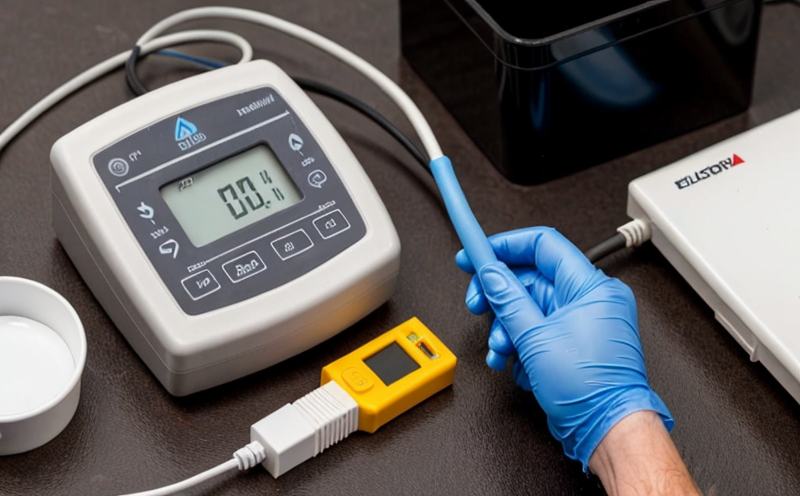EN 12502 Electrochemical Testing of Corrosion in Water Systems
The EN 12502 standard is a critical tool for the evaluation and quantification of localized corrosion in water systems. This electrochemical testing method provides a robust framework for understanding the corrosive behavior of materials, particularly those used in potable water distribution networks.
The primary focus of EN 12502 lies on the use of electrochemical techniques to assess and quantify pitting and crevice corrosion. These forms of localized corrosion can lead to significant structural damage if left unmonitored, posing a threat to both public health and infrastructure integrity.
Under this standard, various test methods are employed which include immersion testing, potentiodynamic polarization scanning, and open-circuit potential measurement. The aim is not only to identify the presence of corrosion but also to understand its mechanism, severity, and rate. This information is crucial for designing more resilient materials and systems.
The electrochemical techniques used in this standard are based on principles that measure the electrical resistance or response of a material to an applied current. The results provide insights into how different materials perform under various water conditions, helping engineers to select appropriate materials for specific applications.
For instance, stainless steels and copper alloys are frequently tested using EN 12502 due to their widespread use in water distribution systems. Understanding the corrosion behavior of these materials is essential for ensuring long-term reliability and safety.
| Material Type | Common Uses | Expected Corrosion Forms |
|---|---|---|
| Suspected Stainless Steel | Piping, fittings, and storage tanks | Pitting and crevice corrosion |
| Copper Alloy | Water meters, valves, and faucets | Pitting and localized attack |
| Zinc Coatings | Galvanized components | Localized corrosion and galvanic coupling effects |
The testing process involves several steps, each designed to simulate real-world conditions as closely as possible. The specimens are typically prepared by cutting representative samples from the actual system or component under study. These samples are then immersed in a standardized solution that mimics the water chemistry encountered in the field.
After immersion, potentiodynamic polarization and cyclic voltammetry techniques are used to measure the corrosion resistance of the materials. The results provide detailed insights into the electrochemical behavior of the material, helping to identify any areas where further investigation is necessary.
The acceptance criteria for EN 12502 involve a combination of visual inspection, measurement of weight loss, and assessment of current density. These parameters help to determine whether the corrosion observed falls within acceptable limits or requires corrective action.
In summary, EN 12502 electrochemical testing is an essential tool for ensuring the integrity and safety of water systems. By providing detailed insights into localized corrosion mechanisms, this standard enables engineers and quality managers to make informed decisions about material selection and system design.
Scope and Methodology
- Test Specimens Preparation: Representative samples are cut from the actual component or system under study. These should be free from any defects that could influence test results.
- Standard Solution: The specimens are immersed in a standardized solution designed to mimic real-world water chemistry conditions.
- Polarization Measurements: Potentiodynamic polarization and cyclic voltammetry techniques are used to measure the corrosion resistance of the materials. These methods provide detailed insights into the electrochemical behavior of the material.
- Weighing and Measurement: The specimens' weight loss is measured over a defined period, providing quantitative data on the extent of corrosion.
The results are then compared against established acceptance criteria to determine whether the corrosion observed falls within acceptable limits or requires corrective action. This methodology ensures that the testing process accurately reflects real-world conditions and provides reliable data for decision-making.
Industry Applications
- Potable Water Systems: Ensures the integrity of materials used in water distribution networks, reducing the risk of contamination.
- Recreational Facilities: Guarantees the safety and durability of systems in swimming pools and other water-based facilities.
- Industrial Plants: Protects critical infrastructure from localized corrosion that can lead to costly downtime.
- Retail Establishments: Ensures compliance with health and safety standards, protecting public health.
The application of EN 12502 electrochemical testing is not limited to these sectors. The standard's broad applicability makes it a valuable tool across various industries where water systems play a crucial role.
Use Cases and Application Examples
In potable water distribution networks, EN 12502 testing helps identify areas susceptible to localized corrosion. By providing detailed insights into the electrochemical behavior of materials, this standard enables engineers to select appropriate materials for specific applications.
In recreational facilities like swimming pools, the use of EN 12502 ensures that system components are resistant to localized corrosion, thereby extending their operational life and reducing maintenance costs.
For industrial plants, ensuring compliance with EN 12502 is essential for protecting critical infrastructure from costly downtime due to localized corrosion. This standard helps in identifying areas requiring preventive maintenance or material replacement.
In retail establishments, the application of this standard guarantees that systems are compliant with health and safety standards, thereby protecting public health. The use cases demonstrate the versatility of EN 12502 electrochemical testing across various sectors.





